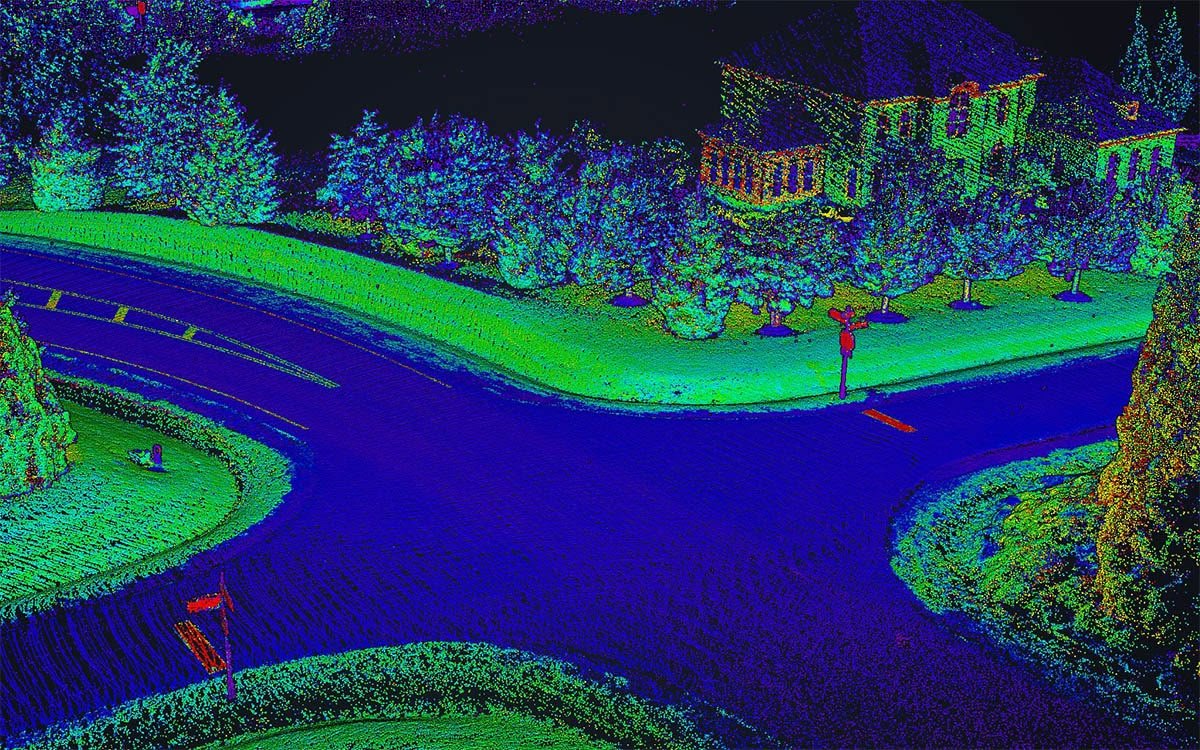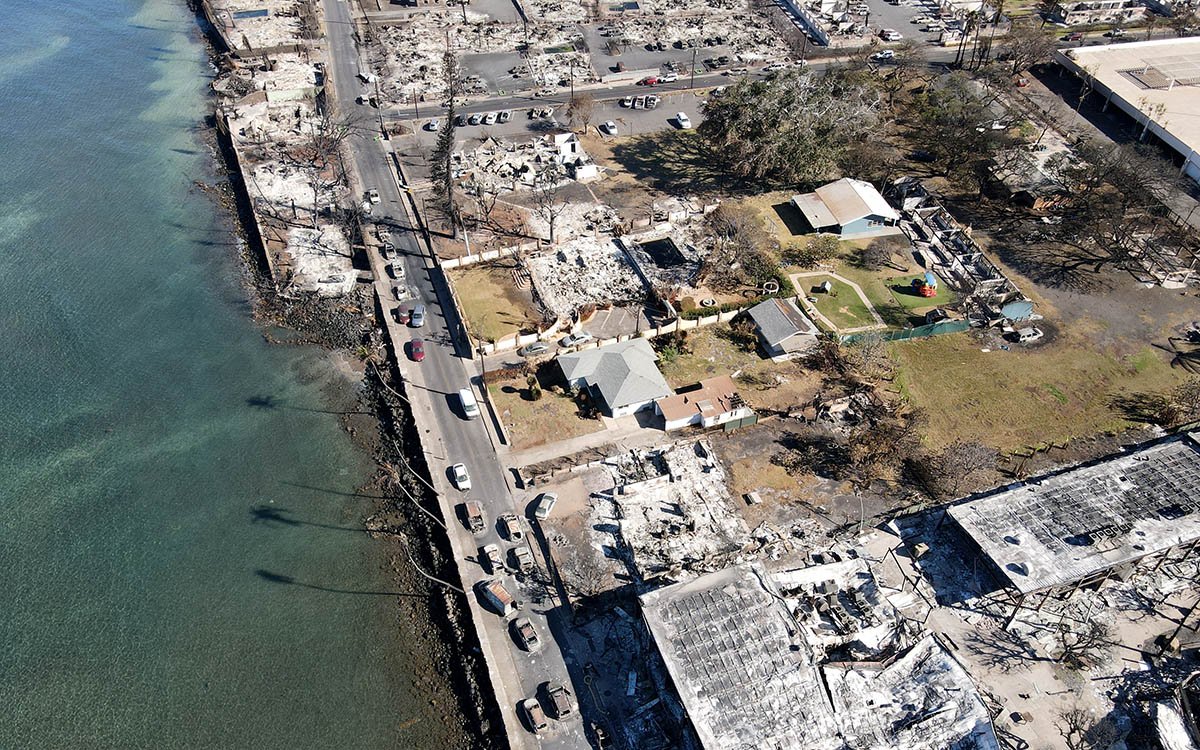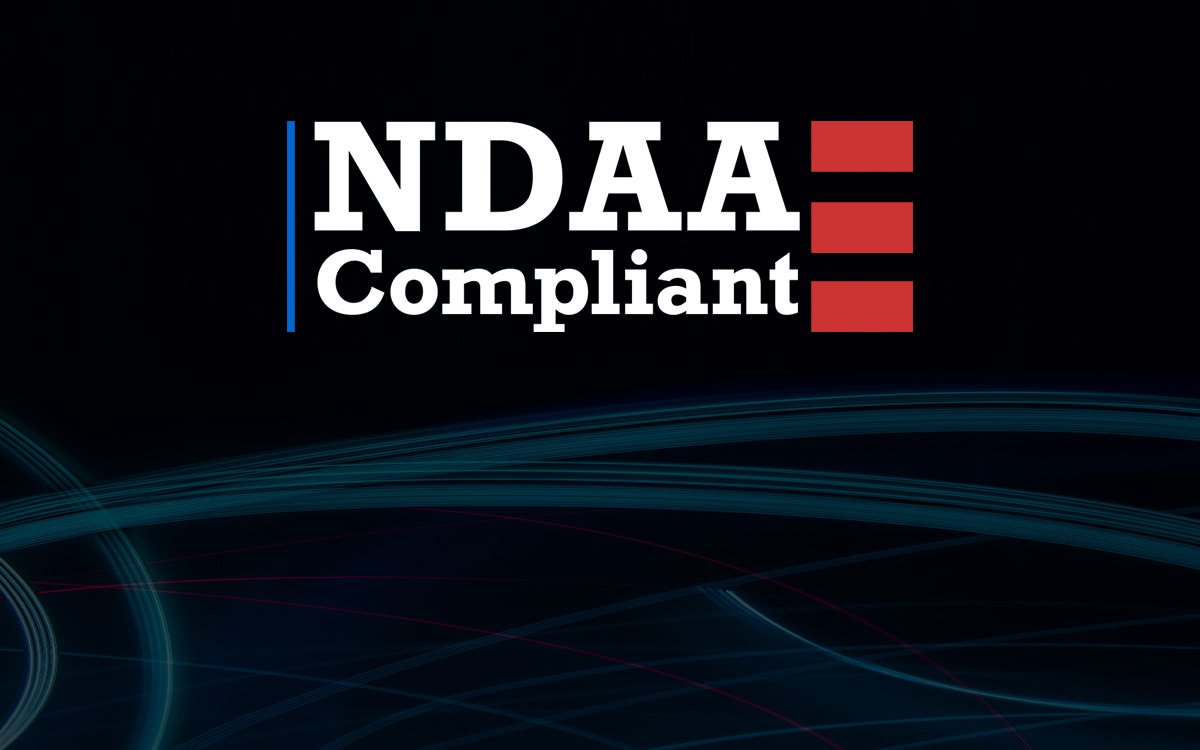Annotation
Amidst the rapidly developing spatial analysis technologies, forestry is increasingly adopting mobile LiDAR solutions for forest inventory and monitoring. This paper presents a field case study evaluating timber volume using a handheld RESEPI Ultra LITE system, which integrates laser scanning, inertial navigation, and SLAM (Simultaneous Localization and Mapping) technologies. The research object was a forest plot at Bear’s Den, a popular hiking and nature observatory in Loudoun County, Virginia, which is characterized by complex terrain and a dense canopy, which complicates traditional GNSS (Global Navigation Satellite System) methods.
To obtain a point cloud, the collected data were processed in PCMasterPro using SLAM and fixed georeferencing techniques (GNSS+SLAM). This is a new technology from Inertial Labs that enables the acquisition of a georeferenced point cloud when surveying SLAM data. The point cloud was then post-processed in Lidar360 software by Green Valley International using the TLS Forest toolset, which enabled automatic tree segmentation and extraction of key measurement parameters, including DBH, height, and volume.
The presented approach demonstrated high efficiency, allowing accurate measurements to be taken in difficult-to-access areas without the need for markers or manual measurements. The results obtained confirm the potential of GNSS+SLAM-LiDAR technology as a reliable tool for operational and sustainable forest resource management.
Introduction
The modern forestry industry faces a growing need for accurate, fast, and efficient inventory [1]. Tracking changes in forest stands, assessing biomass, monitoring logging, and regeneration require detailed and reliable information. Traditional methods, based on visual observations and point measurements, consume a vast amount of time, especially over large areas.
LiDAR (Light Detection and Ranging) is a technology that can radically change the approach to forest monitoring [2]. In recent years, mobile handheld or backpack LiDAR systems have attracted particular attention. Their main advantage is mobility and the ability to operate in complex conditions where unmanned aerial vehicles or terrestrial scanners are not feasible. In conjunction with hybrid GNSS+SLAM positioning technology, the use of modern analytics software for post-processing, such as Lidar360, provides a comprehensive solution that offers a qualitatively new level of data.
GNSS is the general term for satellite navigation systems, including GPS (USA), GLONASS (Russia), Galileo (Europe), and BeiDou (China). Many others are also used, but these are the major constellations. GNSS provides information about the absolute geographic coordinates of a location (latitude, longitude, altitude). SLAM is a technology that allows a device (camera or LiDAR) to simultaneously build a map of its environment and determine its location on that map. SLAM calculates the correct position of the sensor based on its motion and detection of surrounding objects.
GNSS provides georeferencing of the route’s start. When passing under tree crowns, the GNSS signal weakens, and SLAM continues to build a trajectory. After leaving the weak signal area, the GNSS again corrects SLAM’s trajectory. Without GNSS, error accumulation (drift) in the local coordinate system will be added to the SLAM map, which requires additional data processing for georeferencing.
Section 1. What is Handheld LiDAR and How Does it Work?
A handheld or backpack LiDAR is a mobile system combining a laser scanner and (optionally) a GNSS receiver and an inertial navigation system. The operator carries the system in their hands or on their back, walking through the area of interest, and simultaneously collects data that is then processed to obtain a three-dimensional point cloud.
This solution is particularly relevant for the forestry sector. Access to dense thickets, rugged terrain, and the inability to use vehicles or drones make mobile LiDAR systems indispensable. Scanning is performed in motion, without the need for tripods or the deployment of additional equipment, such as ground control points.
Let’s examine Figure 1, which displays a point cloud collected in a forest area using a handheld LiDAR system. As can be seen, this area has uneven and rocky terrain, which creates difficulties for vehicle movement and the deployment of TLS. In this case, a handheld scanner is a valuable solution. Unlike stationary TLS scanners, handheld LiDAR offers flexibility and mobility, allowing for easy navigation around obstacles and capturing the structure of undergrowth and trunks from different angles, thereby minimizing blind spots. Such data is critical for inventory tasks – from assessing tree diameter and height to biomass modeling and estimating timber volume. Thanks to the combination of compactness, accuracy, and the ability to operate in challenging conditions, handheld LiDAR is becoming a primary tool for modern forest mensuration, particularly in remote or inaccessible areas.

Figure 1. Point cloud obtained using handheld LiDAR.
SLAM technology plays a key role in the operation of handheld LiDAR systems, especially in conditions where GNSS is unavailable or unstable [3]. SLAM enables the construction of a map of the environment while simultaneously determining the sensor’s position in space without relying on external navigation. However, one of the main drawbacks of SLAM is the accumulation of errors (drift) – over time, the system can gradually lose positioning accuracy. This is particularly noticeable during long journeys without loop closure, when the device fails to return to a previously scanned area and therefore cannot correct its trajectory. This results in data displacement, which affects the geometric accuracy of the entire scene.
GNSS problems in forests should also not be underestimated. In dense stands, satellite signals are often blocked or reflected multiple times by the canopy, leading to significant positioning errors, especially when using standard GPS receivers without correction [4]. Even high-precision geodetic GNSS receivers lose effectiveness in forests if vegetation density exceeds a certain threshold. In such conditions, combining SLAM and GNSS becomes an optimal solution: GNSS provides absolute positioning, while SLAM ensures continuity of movement and detail within each scene.
Section 2. GNSS+SLAM: The Key to Accuracy in Challenging Forest Environments.
As mentioned in the previous section, one of the primary challenges when working in the forest is the limited availability of GNSS signals due to the dense tree canopy. This makes it impossible to obtain accurate positioning solely based on satellite data. By combining SLAM with GNSS (where the satellite signal is still available), you can achieve stable and precise positioning even in the complete absence of a GNSS signal. In this case, the point cloud will be geo-tagged, which is not possible with the standard approach used in scanning SLAM, as it operates in local coordinates. Such a hybrid scheme is actively used in modern LiDAR solutions, such as RESEPI Ultra LITE from Inertial Labs (Figure 2). The system enables the reliable construction of the operator’s trajectory and produces a highly accurate, georeferenced point cloud, even in deep forest areas [5].


Figure 2. RESEPI ULTRA LITE.
Introducing the latest innovation from Inertial Labs, the lightest complete payload featuring both LiDAR and camera technology. Designed with the modern surveyor in mind, this solution offers unparalleled ease of use and versatility.
Key Features:
- Lightweight Design: Our lightest payload yet, ensuring ease of transport and deployment without compromising on performance.
- SnapFit Adapters: Experience seamless integration with various platforms (Freefly, WISPR, DJI, Sony, Mobile) through our quick plug-and-play SnapFit adapters, allowing for rapid dismounting and mounting.
- Cost-Effective: As the most affordable and comprehensive solution we’ve released, it provides exceptional value without sacrificing quality.
- Precision and Accuracy: Maintaining high data accuracy and precision has remained our priority and a promise to our customers. This product has undergone meticulous cycles of testing and refinement, utilizing proper time-stamping and calibration methods, to ensure we deliver unrivaled performance at the correct value.
- Multi-Mode Operations: Versatile in application, it supports aerial scanning, pedestrian hand-held SLAM (and GNSS+SLAM) operations, and vehicle-mounted mobile mapping, making it an all-in-one solution for diverse surveying needs.
- This product embodies Inertial Labs’ commitment to innovation and excellence, providing surveyors and key players in the 3D mapping space with a powerful tool that enhances efficiency and accuracy in their mapping projects.
For georeferencing, first, only SLAM data is processed. Then, PCMasterPro software analyzes all positions obtained using a GNSS receiver, selecting the most accurate ones. Using these positions, SLAM data is converted into a georeferenced coordinate system.
For this purpose, a GNSS antenna is installed on RESEPI, and data is recorded with satellites. After processing a geo-tagged point cloud, one is obtained; however, before processing, it is necessary to set the “Georeference Options” parameter to 2, as shown in Figure 3.

Figure 3. Processing parameters and geo-tagged point cloud in PCMaster Pro.
However, the point cloud itself is only the first step towards the desired solution; to obtain valuable information, it must be post-processed. For this, specialized software is used, which we will discuss in the next section.
Section 3. Case Study. Data Processing in Lidar360.
After the survey is completed, the data is processed in the Lidar360 software environment. Lidar360 is specialized software developed by GreenValley International for processing and analyzing laser scanning data [6]. It supports the processing of both terrestrial (TLS) and airborne (ALS) laser scanning data and is widely used in forest inventory, ecology, and geomonitoring. The program features a user-friendly graphical interface and a modular structure, with the main functions organized into toolboxes designed to perform specific types of analysis. Among them, the TLS Forest and ALS Forest Toolboxes are particularly valuable for forestry applications. TLS Forest is designed to work with dense point clouds obtained using terrestrial LiDAR. It allows you to segment trees automatically, estimate DBH, height, and calculate the volume of each tree. ALS Forest Toolbox, in turn, is designed to analyze airborne laser scanning data.
Both tools feature automated processing, making Lidar360 a powerful platform for forest analytics. Let’s examine a real-life example of utilizing RESEPI Ultra LITE and Lidar360 in forestry.
SUBSECTION. Case Study: Timber Volume Estimation Using RESEPI Ultra LITE with GNSS+SLAM in Bear’s Den, Virginia
As part of a pilot project to assess the volumetric characteristics of a forest stand in a remote forest area, a forest plot in the Bear’s Den area of Loudoun County, Virginia, was surveyed [7]. The location is characterized by dense canopy cover, pronounced relief, and limited accessibility for traditional surveying methods. The main objective was to estimate the timber stock using a non-contact survey method.
Technology used:
The RESEPI Ultra LITE universal platform was used to collect spatial data. This allowed the operator to move freely around the site, recording the forest structure in 3D even in conditions of total GNSS eclipse under a dense canopy (Figure 4).

Figure 4. A patch of forest in the Bear’s Den area.
The survey covered an area of approximately 2.3 hectares, with a total mission duration of around 5 minutes and 30 seconds. The scanning trajectory was locally closed to minimize SLAM solution drift. The generated geo-tagged point cloud retained high density even in the lower tier, which is key for DBH analysis.
Data processing:
Point cloud processing was performed in the Lidar360 software environment, using the TLS Forest toolbox. The program provided automatic filtering of unnecessary objects, extraction of the ground surface, classification, and segmentation of individual trees, as illustrated in Figures 5 and 6.

Figure 5. Tree classification.

Figure 6. Segmented trees.
Based on trunk segmentation and height analysis, key taxation parameters were obtained, as shown in Figure 7.

Figure 7. Calculated DBH, trunk height, wood volume, and tree crown characteristics.
Results obtained:
As a result of processing, the following estimates were obtained:
- Average DBH (over a 0.5-hectare site): 32 cm
- Average tree height (over a 0.5-hectare site): 11 m
- Estimated wood volume (total over a 0.5-hectare site): 108 m³
The field test confirmed the high applicability of SLAM+GNSS-LiDAR in complex forest terrain conditions. Using RESEPI Ultra LITE in conjunction with Lidar360 made it possible to obtain accurate, geo-tagged spatial data without the need to install markers or measure points using GNSS equipment.
Conclusion
Modern forestry requires highly accurate, operational, and reproducible methods for collecting data on stand condition. Classic approaches, such as manual measurements of tree diameter and height, remain relevant. Still, they are labor-intensive and do not scale well, especially in hard-to-reach or GNSS-denied areas. In this regard, mobile laser scanning systems combining LiDAR, inertial navigation, and SLAM algorithms are becoming indispensable tools for forest mensuration and spatial analysis.
The case study discussed in this paper demonstrates the application of a handheld LiDAR system, RESEPI Ultra LITE, in a natural forest environment in the Bear’s Den area (Loudoun County, Virginia). The primary objective of the survey was to estimate timber volume under conditions where traditional GNSS positioning is challenging due to dense canopy and terrain. The use of SLAM ensured continuous navigation through the forest plot without the need for deploying ground markers or performing manual measurements.
The collected data was processed in PCMasterPro to get a geo-tagged point cloud, as well as Lidar360 – professional software for working with point clouds. The use of the TLS Forest toolbox enabled the automatic segmentation of trees, estimation of diameter at breast height (DBH), measurement of tree height, and calculation of timber volume.
This approach demonstrated high processing speed and sufficient accuracy for decision-making tasks, such as planning logistics operations or calculating carbon stocks. Thus, the combination of handheld LiDAR, SLAM navigation, and advanced post-processing in Lidar360 provides a practical solution for field inventory in real-world conditions. It combines mobility, accuracy, and automation – qualities necessary for sustainable forest management in the 21st century.
References
[2] “RESEPI – LiDAR Payload & SLAM Solutions.” RESEPI, 12 July 2024.
[4] Mendez, Maria. “What Are the Limitations of GNSS?” Inertial Labs, 2 Oct. 2024.
[5] “RESEPI Ultra LITE.” RESEPI, 18 Feb. 2025. Accessed 9 May 2025.
[6] “LiDAR360 Point Cloud & Images Post-Processing and Industry Applications Software – GreenValley International.” Greenvalleyintl.com, 2022. Accessed 8 May 2025.
[7] “Loudoun County, VA – Official Website | Official Website.”.





